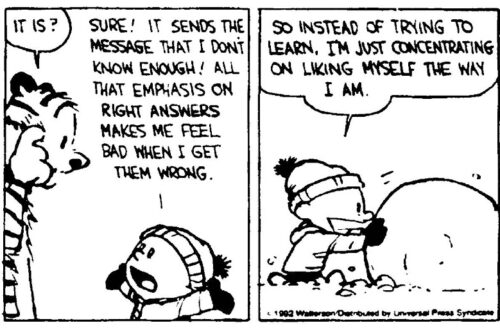If science and religion were totally independent, the possibility of conflict would be avoided, but the possibility of constructive dialogue and mutual enrichment would also be ruled out. We do not experience life as neatly divided into separate compartments; we experience it in wholeness and interconnectedness before we develop particular disciplines to study different aspects of it. There are also biblical grounds for the conviction that God is Lord of our total lives and of nature, rather than of a separate ‘religious’ sphere.
This question has spawned many responses. A prominent response was put forward in recent years by the Intelligent Design movement. William Dembki, a leading proponent of ID, suggests that there are three models for integrating science and religion. The compartmentalization model sees theology and science as two domains that do not overlap. Both study different areas of reality. Science studies fact while theology studies value and purpose. The complementary model suggests that while science and theology study the same reality and both are necessary for a complete explanation, they are incommensurate and cannot occupy the same form of discourse. According to the conflict model there can be only one truth and it is either theological or scientific. Both study the same reality, but only one has the correct view. Someone of this ilk might say that science has disproved the Bible.
Dembski proposes a fourth alternative – the mutual support model. Crucial to this option is how one justifies claims made both within science and theology. Dembski argues, “according to the mutual support model, theology can lend credence, increase the conditional probability of or render plausible certain scientific claims and not others. Likewise, science can do the same for theology.”
Dembski outlines his version of epistemic support by contrasting it with both deductive and inductive logic. Both deductive and inductive logic contain the idea of entailment. Consequently, both forms of evidence compel belief. For Dembski, this notion of compulsion is what hinders integration. All the previous models–compartmentalization, complementary and conflict–use these methods of reasoning and end in failure. Dembski’s purpose is to “describe a conception of epistemic support that fosters a genuinely productive interdisciplinary dialogue between theology and science.”
In order for theology and science to integrate, Dembski suggests, we need to use abductive reasoning or “inference to the best explanation.” Dembski describes this as “explanatory power.” To see the difference Dembski compares deductive reasoning with abductive reasoning: “DATA: A is given and plainly true. LOGIC: But if A is true, then B is a matter of course. CONCLUSION: Hence, B must be true as well” is a deductive pattern of reasoning. It contains a standard modus ponens: If A, then B. A. Therefore, B.
Abductive reasoning, in contrast, is: “DATA: The surprising fact A is observed. LOGIC: But if B were true, then A would be a matter of course. CONCLUSION: Hence, there is reason to suspect that B is true.” Dembski notes that this, in terms of deductive logic, is a logical fallacy. It affirms the consequent: If B, then A. A. Therefore B. This, of course, ignores alternative conditions of A. However, he argues that abductive reasoning does not entail compulsion. In other words, Dembski suggests, this form of reasoning allows integration precisely because its means by which truth claims are reconciled is decidedly non-combative.
In the logic of deduction A epistemically supports B because A logically entails and therefore rationally compels B. On the other hand, in the logic of explanation, A epistemically supports B because B provides a good explanation of A.
While there might be no compulsion inherent in the reasoning process, there are nonetheless conditions under which one might make a verdict on competing claims. First, Dembski suggests, B must be consonant with A. To be consonant is to harmonize or to fit the network of knowledge surrounding A. Second, B must contribute to A. Does B help explain other things we know about A? Finally, B must compete with other explanations and, perhaps, win or at least be even with other explanations.
To see this consider the existence of human beings. To argue about the existence of God in deductive logic one might argue thus: If human beings, then God. Human Beings. Therefore, God. However, in abductive logic one might, instead, say something like, “Human beings exist. If God exists and created human beings that would explain there being human beings. Therefore, it is likely God exists.”
There is no compulsion to believe that God exists, only the challenge to supply an alternative explanation for there being human beings – unguided evolution, for example. However, we are not left at a standoff since we can compete for the crown of best explanation. First, does the existence of God meet the condition of consonance? It appears that the existence of human beings is consonant with the existence of God the creator of human beings since God would have the power to create human beings in such a way as to support themselves, form relationships and be the kind of things that we see that they are.
Second, God having created human beings contributes to our understanding of human beings. It explains how human beings have rationality, are able to love, make moral judgments and have personalities. If God is a person then it would stand to reason that human beings would be personal.
Finally, God having created human beings competes well with alternative explanations. It supplies the ingredients to a good explanation of human capacities, opens up the possibility of a spiritual realm and, at least in principle, makes a good explanation of the mind-body problem. Can unguided evolution do the same?
Key to Dembski’s formula is the assumption of religious neutrality. Faith and learning can be integrated by removal of prejudice in the learning process. Dembski’s wider thesis, that creation demonstrates design by a form of intelligence, reveals his commitment to religious neutrality in epistemological commitments. He compares his own view with those of different Christian positions and distinguishes his own by suggesting that his theory does not require any religious presuppositions:
“Intelligent design needs to be distinguished from what is know as creation science or scientific creationism. The most obvious difference between the two is that scientific creationism has prior religious commitments whereas intelligent design does not” (247).
While I have a number of problems with Dembski’s proposal let me talk about one. What I would like to suggest is not merely that one ought to approach science with a prior religious commitments, but that it is not possible to approach science without a religious commitment. Neutrality is not only incorrect as a method of integration; it is not possible for human beings to obtain religious neutrality. Let me be clear, what I am not saying is that it is impossible for human beings to be objective in science. I am saying it is impossible for human beings to be religiously neutral, to have an “open mind” when it comes to ultimate questions and ultimate presuppositions. This is for two reasons.
First, the Bible claims that human beings are by nature hostile to God. That is to say human beings are negative towards God by virtue of their being human beings. Paul writes that creation makes God’s nature clearly perceivable yet human beings “suppress” such truth because of unrighteousness:
“For the wrath of God is revealed from heaven against all ungodliness and unrighteousness of men who suppress the truth in unrighteousness, because that which is known about God is evident within them; for God made it evident to them. For since the creation of the world His invisible attributes, His eternal power and divine nature, have been clearly seen, being understood through what has been made, so that they are without excuse. For even though they knew God, they did not honor Him as God or give thanks, but they became futile in their speculations, and their foolish heart was darkened. Professing to be wise, they became fools, and exchanged the glory of the incorruptible God for an image in the form of corruptible man and of birds and four-footed animals and crawling creatures” (Rom 1:18-22).
William Dembski, Intelligent Design: The Bridge Between Science and Theology (Downers Grove: InterVarsity Press, 1999).


